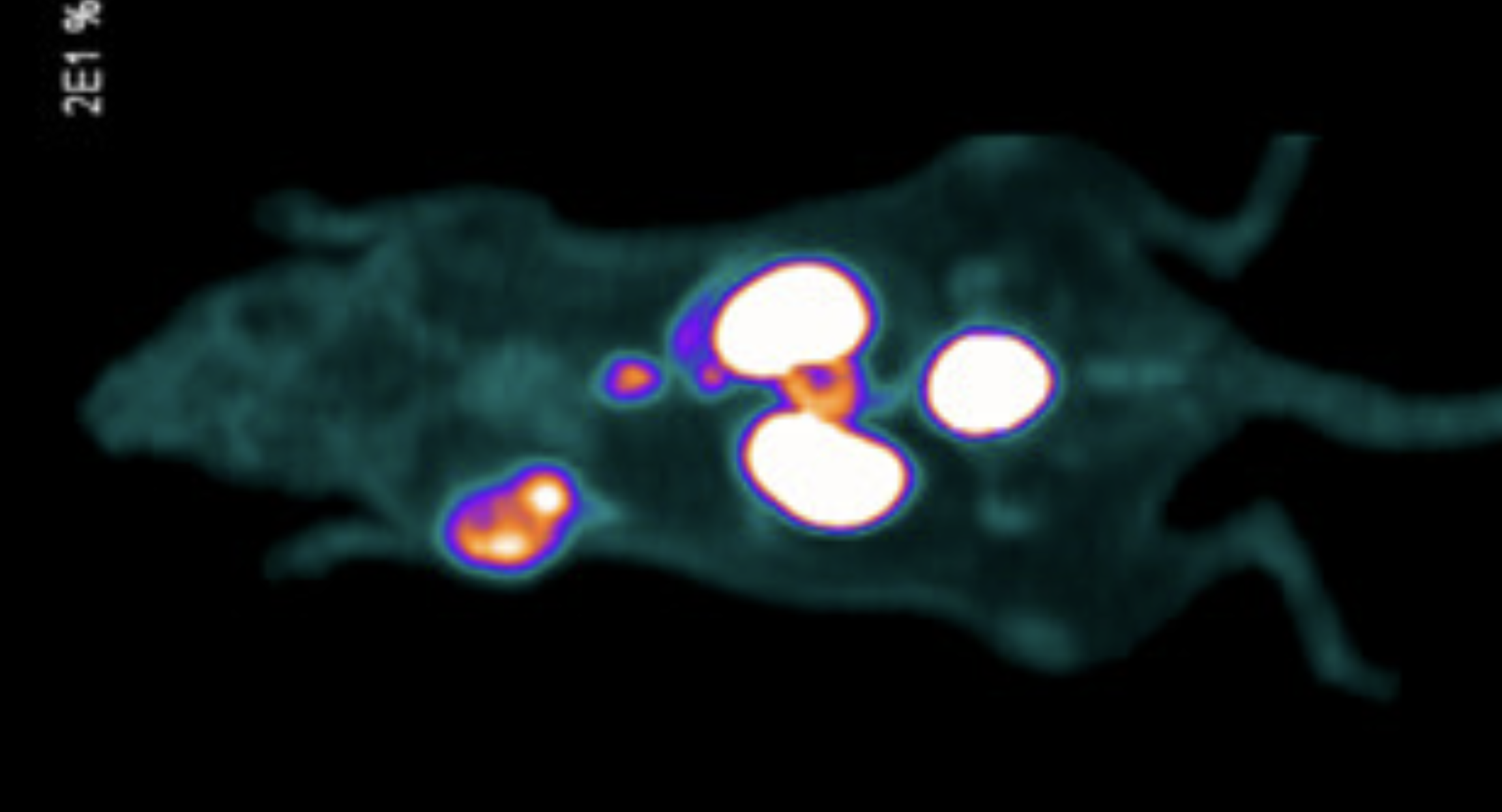New tracer could enable surgeons to see and hear prostate cancer
August 21, 2025

August 21, 2025

A preclinical evaluation of a new ’dual-mode’ tracer agent shows promise in not only helping surgeons image and plan prostate cancer procedures, but also provide them with much more consistent and targeted guidance during surgery.
The agent uses a single tracer molecule labeled with Fluorine-18—a common isotope used in Positron Emission Tomography (PET) scans—for diagnostic imaging. It also provides a one-step, widely accessible solution that would enable combined fluorescence-guided and radio-guided surgery.
“Precision medicine is increasingly being practiced and developed to address the sophisticated treatment methods for diseases like cancer,” says Dr. David M Perrin, a University of British Columbia chemist and senior author on the paper, published in advance in the Journal of Medical Chemistry.
“Our tracer provides high-resolution visual guidance, but would also allow a surgeon to use a hand-held Geiger counter probes to ‘hear’ areas of high radiation density that would accumulate in cancerous tissue not immediately visible—whether it's a lymph node, or distant metastasis, or local invasion in the like the bowel or the gut.”
The tracer targets and binds to PSMA—prostate-specific membrane antigen—a protein that is highly expressed on the surface of prostate cancer cells. It not only has a high uptake by the tumour for PET images, but high optical brightness in the fluorescent mode without requiring special visual equipment.
“There’s a real lack of good clinical options when it comes to dual-mode PSMA tracers,” adds Dr. Perrin. “So we feel this could fill an incredibly useful function in the treatment spectrum for prostate cancer, and potentially other diseases like larynx and ovarian cancer if the same approach can be applied to these.”
Dr. Perrin’s team and colleagues with the Department of Molecular Oncology at BC Cancer tested the tracer on mice with human tumours implanted in them. The next steps include Good Manufacturing Practices assessments, toxicity testing, and validation runs.
“By combining the technology of 18F-organotrifluoroborates with fluorescein, we have a very bright future in bringing dual-mode tracers closer to clinical applications,” says radiochemist Jerome Lozada, first author on the paper who conducted the experiments while at UBC. “The tracer is highly translatable to a larger variety of healthcare settings and smaller hospitals that typically have access to more standard suites of equipment.”
According to the Canadian Cancer Society, about one in eight Canadian men will develop prostate cancer during their lifetime—one in 30 will die from it. Treatment often involves trade-offs between complete tumour removal and preserving critical structures like nerves, the seminal vesicle, bowel, and bladder, particularly in cases of advanced localized disease.
"The implementation of dual mode fluorescent-PET racers in the surgical field is an exciting new approach to maximize benefit and minimize harm associated with more extended lymph node removal as well as to decrease the rate of positive surgical margins of a radical prostatectomy,” says Dr Larry Goldenberg, associate director of development and supportive care at the Vancouver Prostate Centre and a professor with the department of Urologic Sciences at UBC, who was not involved in the study.
“This novel approach has the potential to maximize local disease control and theoretically improve oncologic outcomes.”
“We already have similar approaches in breast cancer treatment using a radioactive tracer and methylene blue given as a separate injection,” explains Dr. Philip F Cohen, division head of nuclear medicine at Lions Gate Hospital, who was not involved in the research. “The surgeon uses a radioactive probe to detect the radioactivity and then sees if there is blue dye when they try to identify the lymph node visually. This new dual tracer does the same thing, but with potentially just one injection.”
The research was funded by the Canadian Institutes of Health Research.
Synthesis and Preclinical Evaluation of Dual-Mode Fluorescent F-PET Tracers Targeting PSMA
https://doi.org/10.1021/acs.jmedchem.5c01480
We honour xwməθkwəy̓ əm (Musqueam) on whose ancestral, unceded territory UBC Vancouver is situated. UBC Science is committed to building meaningful relationships with Indigenous peoples so we can advance Reconciliation and ensure traditional ways of knowing enrich our teaching and research.
Learn more: Musqueam First Nation